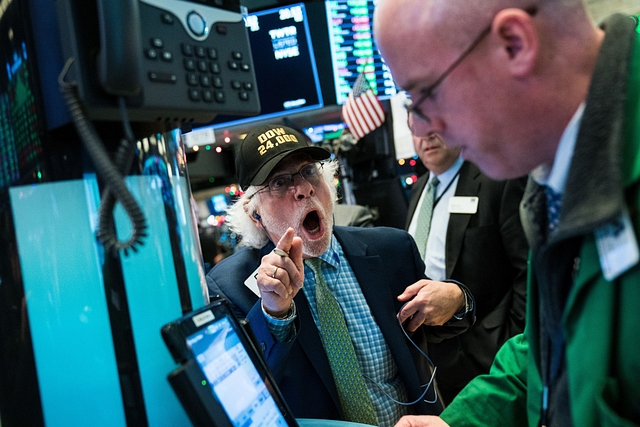
Christmas Eve Crash: Takeaways From The Dow Plunge
Investors don’t necessarily reward independence of central banks as a rule. What they favour is policy which they perceive as consistent and pro-growth.
On 24 December 2018 there was a ‘drop’ in New York that sent a silent message that is important and relevant not just for India but also for rest of the developing economies across the globe. The day witnessed an unprecedented decline of 2.9 per cent in Dow Jones while the S&P500 saw a decline of 2.7 per cent, making it the greatest decline on the trading day on the eve of Christmas.
A lot of analysts have forecasted an eminent recession in the American economy, however, economists suggest that the recession will hit only in 2020 while investors clearly are bearish due to growing concerns regarding the economy.
There are many reasons behind the bearish sentiment even as the Fed expects the American economy to strengthen further in 2019. There is definitely some anxiety regarding the recent government shut-down or the ongoing trade war but a major trigger for the fall on 24 December is the mixed signals that investors got when the Treasury Secretary mentioned his communication with six major banks to ensure adequate liquidity is available for lending.
Such assurances, at a time of a fall in stock markets are only made when there’s a financial crisis and thus, this announcement could have made investors nervous and fuelled the downward pressure on the markets. Another factor worth considering is regarding the autonomy of the Fed, which last week decided to increase interest rates. The classic conflict between the central bank and the government over monetary policy and autonomy was at display on 24 and investors must definitely be nervous given the uncertain policy environment we are subject to currently.
This somehow tells us that investors and markets reward good institutional relations between the central bank and the government while they penalise when these relations deteriorate. This episode reminds me of a recent debate in India regarding the RBI’s autonomy, independence and later, regarding the impact of a change of guard at India’s central bank. Thus, two similar episodes of conflict regarding autonomy of the central bank saw investors react in a different manner. In India’s case, the conflict was much severe as the governor had to be changed due to a surprise resignation so Indian markets should have tanked post the change of guard - but they didn’t.
This is where the lesson actually lies for commentators who advocate greater autonomy for the central bank and predict doomsday for the economy after every “high-profile” exit at the Mint Street. Markets reward performance. While high profile exits do make analysts nervous, investors broadly look at the performance of the individual and evaluate the decisions taken by them rather than their credentials. Thus, it is not going to be the case that investors would always reward greater autonomy for the central bank; in times when the central bank makes policies that investors view as inconsistent or that may hurt the economy, they may as well reward some oversight of the central bank.
The recent change of guard at RBI witnessed a lot of nervousness amongst commentators who were forecasting a significant fall in the markets subsequently. Markets, however, continue to function just as usual and a major reason behind this has been the concerns that investors had about the liquidity situation in NBFCs post the IL&FS crisis. Thus, the change of guard and subsequent appointment of the governor resulted in renewed confidence amongst investors of consistent policy of both the RBI and the government. This consistency was subsequently rewarded by the markets thereby showing that investors do tend to reward good institutional relationship between the government and the central bank. I do, however, wonder what they value more, a good relationship between the government and the central bank or the autonomy of the central bank?
Unfortunately, I don’t have an answer to this yet but another important point worth mentioning is that India now has a monetary policy committee that takes monetary policy decisions, so a change of guard at RBI is anyway going to have a limited impact on the monetary policy outlook. This, in a way may explain why the investors were not as nervous about the resignation and subsequent immediate appointment of Shaktikanta Das as the new governor of RBI.
At the onset, I must state that I am a staunch advocate for independence of the central bank, however, recent evidence from India makes me reconsider the institutional relationship that must persist between the central bank and the government. The relatively low inflation experience post 2014 coupled with fiscal consolidation should have been accompanied by a much more accommodative stance, but inflation bias resulted in small reductions in repo rates which ultimately led to extremely high real interest rates. This suggests that there is a possibility of errors that an independent central bank can make should it not engage with policy makers in the executive.
Thus, while I still advocate for RBI’s independence, I also believe there’s a need for greater institutional dialogue, discussion and debate between the RBI and the Finance Ministry. While such dialogues are held from time to time, a formal framework for the same could go a long way in ensuring that such errors can be mitigated and that India’s monetary policy is in tandem with its fiscal policy.